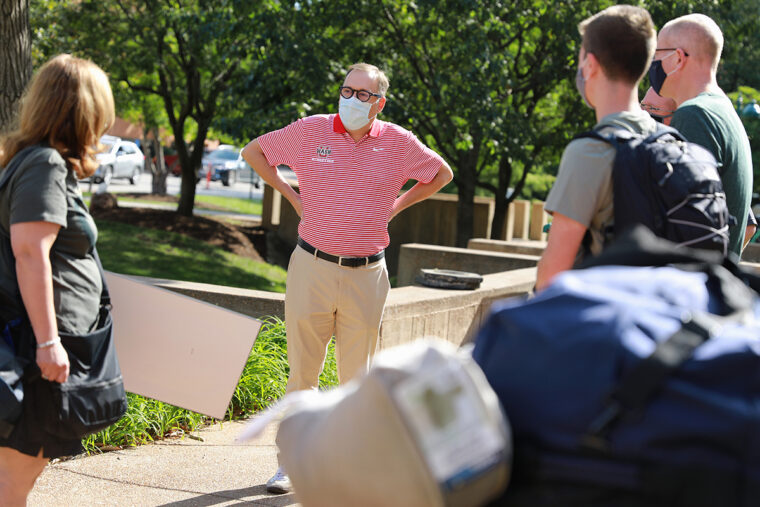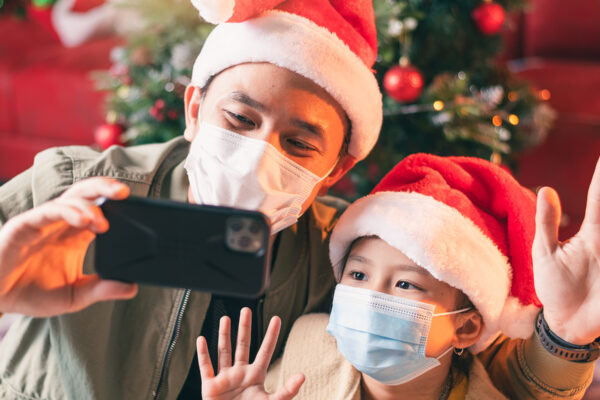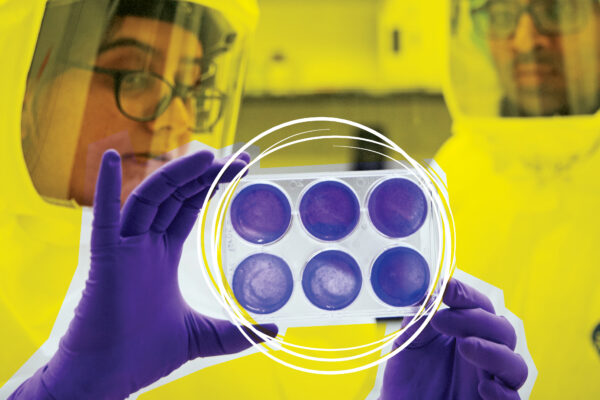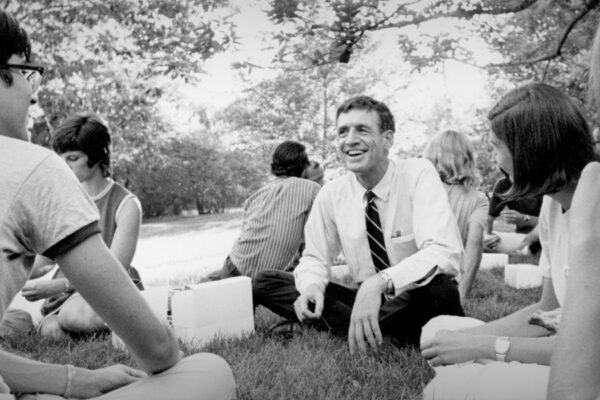Other than that, how was the play, Mrs. Lincoln?
Indeed, to celebrate 2020 seems absurd, even wrong — and yet, perhaps necessary.
In 2020, members of the Washington University in St. Louis community made new discoveries and friendships; accomplished incredible feats in teaching and learning; welcomed amazing new students; and said goodbye to one of the greatest leaders in university history.
We hungered for this good news, as evidenced by the thousands of hits and views on our sites and social platforms. Here, Washington University shares some of its most popular and uplifting stories and videos from a year we can never forget.
Our people
In 2020, Washington University welcomed a new provost, Beverly Wendland, a new dean of the faculty of Arts & Sciences, Feng Sheng Hu, and 1,807 new first-year students. Among them were Justin Lewitus, Ad’mirel Durden and Tanner Smith, who documented their first 40 days of this most-unusual school year with a second of video a day.
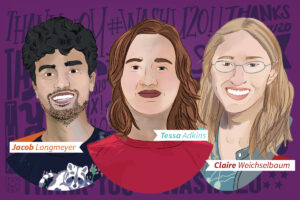 We also said farewell to 3,298 graduates who fought for economic justice, expanded opportunities for women in medicine, helped local students and worked to make Washington University a place where all students can thrive. And for all of that and more, we say, “Thank you.”
We also said farewell to 3,298 graduates who fought for economic justice, expanded opportunities for women in medicine, helped local students and worked to make Washington University a place where all students can thrive. And for all of that and more, we say, “Thank you.”
Washington University also said goodbye to Chancellor Emeritus William H. Danforth, MD, who died Sept. 16, 2020, at the age of 94. Danforth served as chancellor for 24 years and was, as evidenced by the many remembrances posted on his tribute site, a mentor to students, a champion of the St. Louis region and a visionary in the field of higher education.
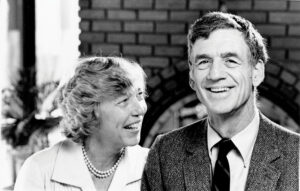
In 2020, the university also cheered alumnus and astronaut Bob Behnken, who launched into space on the SpaceX Crew Dragon, as well as virologist Charles M. Rice, who received the Nobel Prize for hepatitis C discoveries he made while at the School of Medicine from 1986 to 2000. His research fueled advances that have saved millions of lives. We also rejoiced when seniors Zach Eisner and Max Klapow, roommates and best friends, learned via a surprise Zoom call from Chancellor Andrew D. Martin that they both won a Truman Scholarship, the premier graduate fellowship in the United States for those pursuing careers as public service leaders.
Our research
Washington University researchers on both the Danforth and Medical campuses made important discoveries about COVID-19 and its consequences. New research from School of Medicine scientists suggests that COVID-19 patients become seriously ill because their immune systems can’t do enough to protect them. They suggest that boosting immunity could be a potential treatment strategy for COVID-19. Scientists also developed a saliva-based COVID-19 test that is faster and easier than nasal swab tests.
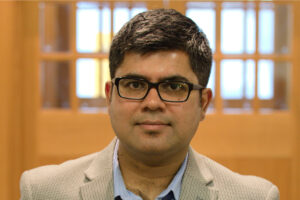
Meanwhile, on the Danforth Campus, a COVID-19 forecasting model predicted that COVID-19 cases would increase to 20 million by the end of January. John E. McCarthy, the Spencer T. Olin Professor of Mathematics in Arts & Sciences, helped develop a mathematical model that assesses the risk of attending a public sporting event; researchers in the lab of Rajan Chakrabarty, associate professor of energy, environmental and chemical engineering at the McKelvey School of Engineering, modeled the interplay between the duration and intensity of social distancing and found that longer periods of social distancing are not always more successful. They concluded any strategy that involves social distancing requires other steps be taken in tandem.
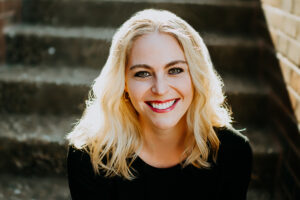
And Caitlyn Collins, assistant professor of sociology in Arts & Sciences, found early evidence that the pandemic has exacerbated the gender gap in work hours, which could have enduring consequences for working mothers.
Research in other disciplines was abundant, too. School of Medicine scientists helped identify the most important features of cancer cells’ protein fragments, which can help distinguish the tumor from healthy tissue, enabling researchers to design better immunotherapies, including vaccines. Another study found that natural killer (NK) cells, i.e. “young cells,” may be more effective as immunotherapy for cancer treatment than adult NK cells that come from bone marrow.
University political scientists found that it isn’t personal profiles, but, rather, proximity to bigger cities that drives the political divide. Natalie Mueller, an archaeologist in Arts & Sciences, is growing lost crops in an experimental garden and testing how these plants were domesticated by ancient people. And research from Deanna Barch, chair of psychological and brain sciences in Arts & Sciences and the Gregory B. Couch Professor of Psychiatry at the School of Medicine, found a nontrivial rate of children as young as 9 and 10 years old are thinking about suicide. And chemists in Arts & Sciences have discovered that red bricks — some of the world’s cheapest and most familiar building materials — can be converted into energy storage units that can be charged to hold electricity.
Our resolve
Washington University united in solidarity of each other and St. Louis during the COVID crisis. Faculty sent support to students suddenly studying remotely and St. Louis celebs wished congratulations to the Class of 2020. The COVID-19 WashU/BJC Maker Task Force helped make products such as face shields and ventilator parts, while students organized to make masks, tutor children and deliver food.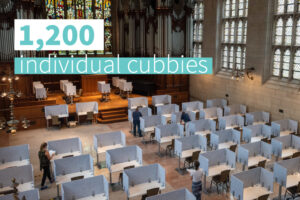
Workers configured campus spaces, adding 600 outdoor chairs, 1,200 indoor study cubbies and 750 hand sanitizer dispensers. Faculty imagined their courses anew, studying best online pedagogy practices (no long recorded lectures), creating better assessments (fewer final exams, more projects) and learning technology tools (Zoom breakout rooms, Canvas discussion boards).
And we also came together in celebration and song. A story featuring a recording of “Our Love is Here to Stay,” performed by faculty members Todd Decker and Kelly Daniel-Decker, was the fourth-most popular article in The Record all year. And performances of the alma mater by Department of Music faculty and students, along with The Beatles’ “In My Life” performed by graduating senior Semhar Mekonnen in the Quad, ranked among the most-viewed YouTube videos.
So yes, other than that, the performances were quite good.
